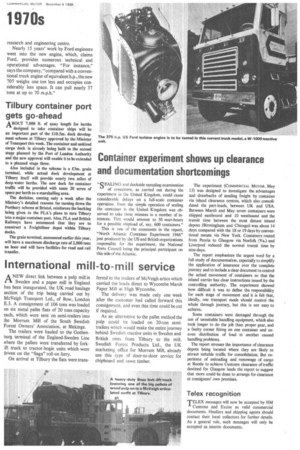Container experiment shows up clearance and documentation shortcomings
Page 37

If you've noticed an error in this article please click here to report it so we can fix it.
"SEALING and dockside sampling examination " of containers, as carried out during the experiment in the United Kingdom, could cause considerable delays on a full-scale container operation. Fven the simple operation of sealing the . container in the United Kingdom was observed to take three minutes in a number of instances. This would amount to 30 man-hours for a possible shipload of, say, 600 containers."
This is one of the comments in the report, "North Atlantic Container Experiment 1966" just produced by the US and British organizations responsible for the experiment, the National Ports Council being the principal participant on this side of the Atlantic.
The experiment (COMMERCIAL MOTOR, May 13) was designed to investigate the advantages and drawbacks of sending freight by container via inland clearance centres, which also consolidated the part-loads, between UK and USA. Between March and May. seven containers were shipped eastbound and 10 westbound and the transit time between the most distant inland depots (Birmingham and Chicago) was about 14 days compared with the 18 or 19 days by conventional means via New York. Containers routed from Peoria to Glasgow via Norfolk (Va.) and Liverpool reduced the normal transit time by nine days.
The report emphasizes the urgent need for a full study of documentation, especially to simplify the application of insurance over the complete journey and to include a clear document to control the actual movement of containers so that the inland carrier has clear instructions issued by the controlling authority. The experiment showed how difficult it was to define the responsibility for each stage of movement and it is felt that, ideally, one transport mode should control the whole through journey, but this is not easy to achieve.
Some containers were damaged through the use of unsuitable handling equipment, which also took longer to do the job than proper gear, and a faulty corner fitting on one container and uneven distribution of load in another caused handling problems.
The report stresses the importance of clearance depots being located where they are likely to attract suitable traffic for consolidation. But experience of unloading and restowage of cargo at Bootle to achieve Customs clearance of traffic destined for Glasgow leads the report to suggest that more could be done to arrange for clearance at consignees' own premises.








































































































































































